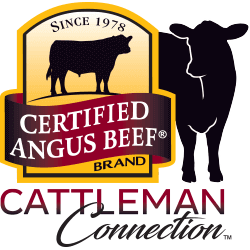
Sharing the good news about beef nutrition
January 19, 2011
Sometime between Christmas in Nebraska and a new year’s wedding in Wyoming, I read a bunch of rumblings online about new nutritional labeling guidelines in the meat indsutry. I skimmed, but there’s only so much information a girl can take in while in vacation mode. When I finally got back to Ohio last week, I set out to take the time to understand what the talk was all about.
My go-to-guy here in the office is Mark McCully, our assistant VP of Supply Development. He’s judged a few livestock shows in his day, so I always know he’ll have some sort of answer to any question I throw at him and likely a whole set of reasons to back it up. I thought it only fair that if I have a go-to-guy for industry information, you should too. So if you were in vacation mode a few weeks ago too and are now wondering what all that chatter on nutritional labeling was about, Mark’s going to lay it all out. Enjoy!
-Laura
Just weeks ago in the days between Christmas and New Year’s, USDA published the final rule on mandatory nutritional labeling of meat and poultry products. This was not a surprise to those involved with selling meat products as the rule has been in the making for about 10 years. The rule is set to take effect on January 1, 2012 and full details of the rule can be read at the Federal Register website .
It seems with cattle producers that the word “mandatory” evokes lots of emotion, and typically not pleasant ones. After all, cattlemen are independent in nature, and no one likes to be “made” to do something, just ask my two children. This rule, however, seems to have many positive benefits to beef producers and the downside risk seems pretty limited.
Ultimately, this type of labeling will give the industry an exciting opportunity to educate consumers. Most shopping the meat case today would tell you that a boneless, skinless chicken breast is their best protein option to fit a low fat or calorie-conscious diet. Kudos to the chicken industry for creating that perception, but there are many beef cuts that can match the fat and caloric content of that chicken breast…and taste a bunch better in the process! Consumers might very well be surprised when they start reading those labels and realize all of the great beef options they have to choose from.
The exact details of how this rule will be implemented are still being determined. Most likely you can expect to see more labeling on the packages themselves as well as more nutritional information posted around the meat case. There will be some costs associated with the changes but most of the trade associations support this move believing the costs will be manageable and recovered by improved demand. Regardless of the labeling methods, putting the positive facts about beef’s nutritional benefits in front of the consumer should be supportive to beef consumption.
The Certified Angus Beef ® brand should also be positively impacted by this move. The nutritional standards will be established by testing beef within the different quality grades, a composite sample if you will. The nutritional labels, therefore, will be the same regardless of grade or brand. As the implementation of this rule is clarified, we will be working with our licensed retail partners to help them develop the necessary labels and point of sale material.
Nutritionally speaking, beef has a great story to tell – a protein rich food full of essential vitamins and minerals, available in some very low fat options. Nutritional labeling of meat and poultry products is a positive step to educate customers, level misperceptions about the nutritional value of beef, and tell that great story that ultimately ends with the consumer feeling good about the beef choices they are making!
-Mark
You may also like
Success, Despite Challenges
Today’s market is complex and competitive. The collective effort of stakeholders across the supply chain positions Certified Angus Beef to meet the record demand for premium beef moving forward. Signals across the beef industry are clear and Angus farmers and ranchers seeking high-quality genetics that deliver premium beef are producing a product in high demand.
Keep the Supply Coming
A record-high 800 registrants from 17 countries gathered in Austin, Texas, to learn more about CAB, become inspired by the culinary work of chefs and pitmasters, and celebrate sales and production success. But at the forefront: supply and demand, a reflection of the chaotic past year, and preparing for what’s ahead.
Consumer Demand, Power of Quality
Demand for high-quality beef persists. But with that demand comes challenges. From tight cattle supplies to higher costs and increasing pressure on retailers to deliver a consistent eating experience, the pressure is on. David O’Diam, CAB VP of retail, addressed the current retail beef environment, highlighting both opportunities and challenges in today’s marketplace.



